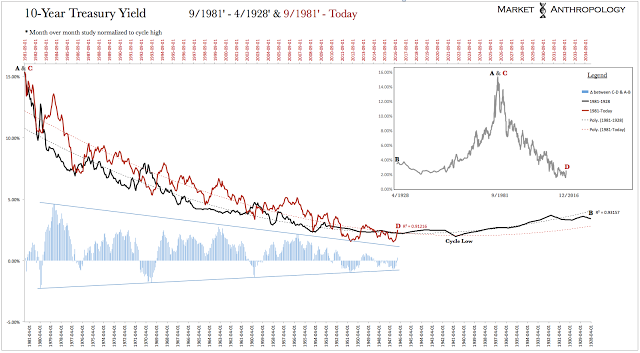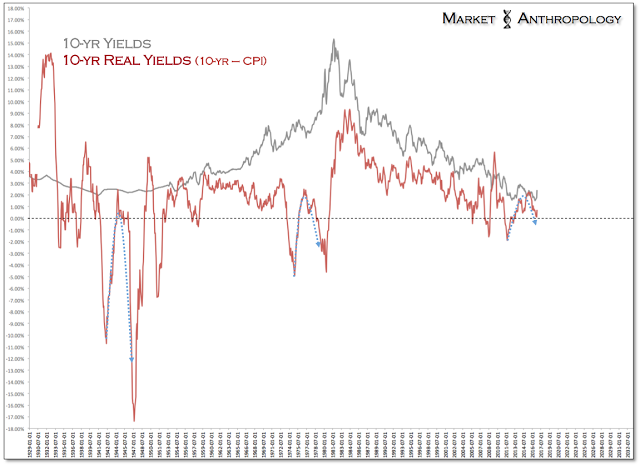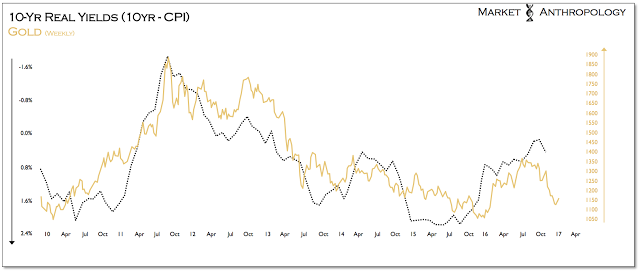No rest for the weary – or the wicked, as the New Year gets quickly to the point with a few key economic data plots this week. Coming through last quarter, the data extended a decisively more upbeat turn that became apparent last summer shortly after Britain’s Brexit vote failed to immediately usher in a broad economic slowdown that was widely feared with such an outcome.
Correlating with this turn in the data last summer was a pivot in the dollar and yields, which greatly impacted the safe haven uptrends in precious metals and Treasuries that had enjoyed significant rallies in the front half of 2016. Further supporting the moves were the gathering expectations that the Fed was poised to raise rates in the back half of the year, if the data maintained its positive tone – which was realized at their December meeting.
For the moment, macro trends appear to be trading off of a more binary calculus that positive economic data will support the dollar and equity market rallies and limit the upside reach in gold and Treasuries. Basically, if market participants believe that the economic uptrend has further room to run and that the prospective benevolent policies of a new US administration will help extend these expectations, the future looks much brighter in 2017 than where you sat a year before.
However, if you believe, as we do, that the data basically just rebounded from overtly bearish expectations that came to pass in the first half of 2016 and that the perceived breakouts in equities and the dollar will retrace yet again with the data this year, than 2017 presents a continuation of a very broad market cycle top that has much greater risks on the downside for the dueling bull markets in equities and the dollar. From our perspective, the “Trump effect” is nothing less than ironic, considering the cycle has greatly been distinguished by a US led cyclical uptrend that began when some of the brightest minds on the Street were expecting a “new normal” to emerge after the financial crisis that saw the US taking a back seat to emerging economies, namely China.
A renewed belief in US hegemony would have been timely back then – when the S&P 500 was a third of its current market capitalization and the US dollar was nearly 30 percent weaker than it enjoys today. But alas, the market often wryly winks without prejudice at both the ignorant and the experienced at market turns.
Although the economic data may take some time to again disappoint over the coming weeks and months, the expectations of a new administration revamping US manufacturing and unleashing untapped potential in the economy this year—hence lifting most boats—appears even less realistic than the previous notion that the considerable downturn in US manufacturing that began in 2014 would take the broader economy into recession over the past two years.
The reality is non-manufacturing’s share of GDP is roughly five-and-a-half times larger than manufacturing is in the US and that will certainly not change overnight – regardless of how aggressive the incoming administration is. Moreover, the heightened risk on demand by protectionist policies that Trump continues to threaten would likely more than offset the potential benefits of tax breaks and looser regulations on prospective supply within the US manufacturing sector.
Tuesday, we received the ISM manufacturing index that exceeded forecasts, as manufacturing executives remain largely upbeat headed into 2017. With the ISM non-manufacturing index slated to be released later today, it will be interesting to see if they share the same upbeat sentiment of manufactures or if the rebound that began in the back half of last year has mostly run its course. Taking a long-term perspective on the series, juxtaposed against the trend in nonfarm payrolls – we suspect the latter is increasingly more likely as we work through the first half of the year.
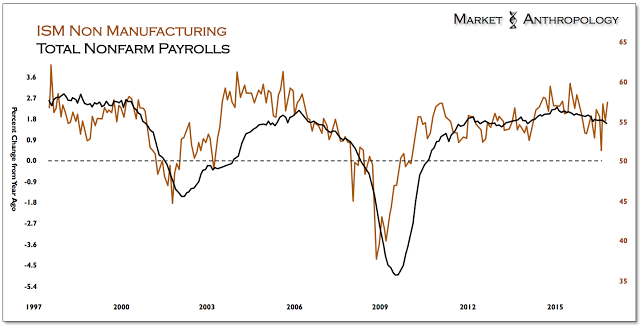
With nonfarm payrolls set to be released this Friday, the markets will have further catalyst to trade on, one we continue to believe favors the short side of the dollar over time, which is again strengthening its inverse correlation with gold as well as Treasuries.
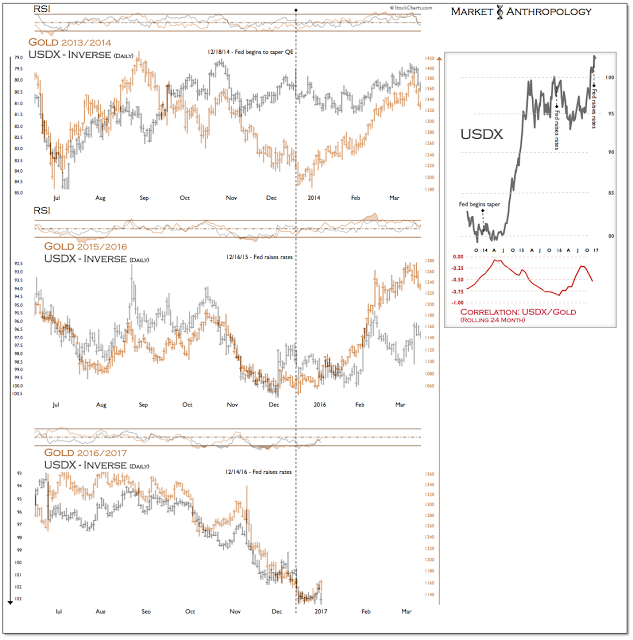
Looking for a continuation of the extreme release higher in yields, consensus expectations have now pivoted 180 degrees from the July lows. Technically – as well as from an intermarket perspective with the US dollar index, the markets set-up quite similar to the early 2002 pivots in the dollar and yields, which propelled both nominal and real yields to new cycle lows. 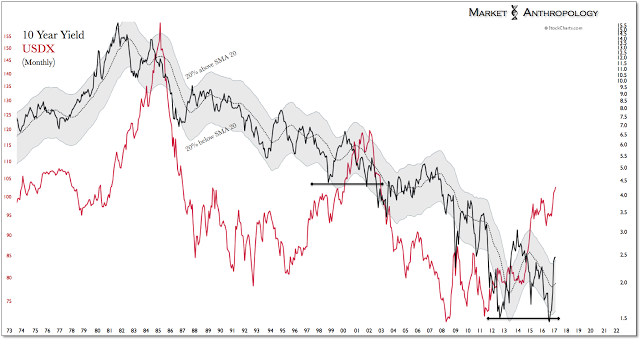
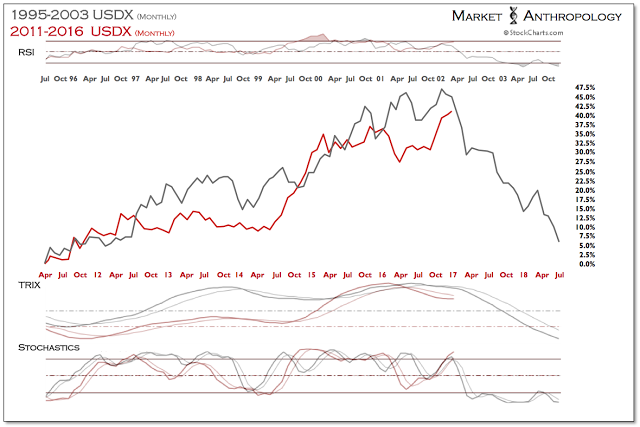

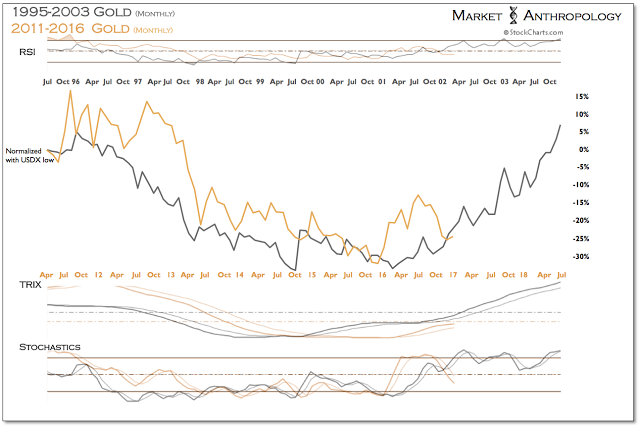
Despite current market expectations that express building confidence in the US economy, we continue to believe—based on our own research of both the nominal and real long-term cycles—that new lows are more likely than the beginning of a new secular growth trend. Moreover, the relative symmetry of the retracement decline in nominal yields from the secular high in 1981 is actually marginally trending even shallower than the trough of the previous cycle in the 1940's.
As such – and despite the considerable retracement declines in precious metals in the back half of last year, we continue to like their long-term prospects in what we believe will be a lower real yield market environment, longer than most still suspect.

